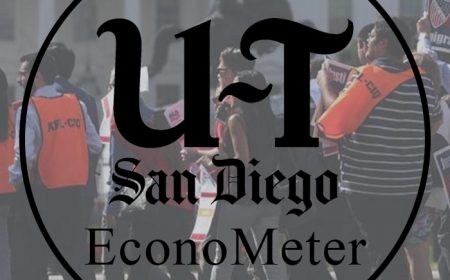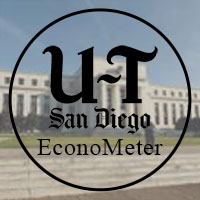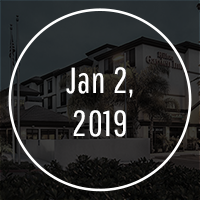Lodging Forecast 2013 – A Primer
The lodging market has outperformed the economy this time around. Employment levels continue to be weak and growth in consumer spending lags along with consumer confidence. Europe is on life support, China, while enjoying a strong economy in recent years is showing signs of decline and the Fed is considering further incentives to move the US economy at a better pace of growth. This is not what we would expect from election year economics, yet our industry has seen strength in our metrics for two straight years!
R. A. Rauch & Associates, Inc. 2012-2013.
By and large, by all measurements, travel demand is up. This year, the hospitality industry has seen growth in both occupancy and average rate. In Q2, 2012, the U.S. hotel industry’s occupancy increased 3.1 percent to 65.1 percent, average daily rate rose 4.7 percent to $106.41 driving revenue per available room up 7.9 percent to $69.32 according to Smith Travel Research (STR).
TravelClick, in its North American Hospitality Review (NAHR), found that the hotel occupancy outlook for third quarter 2012 through second quarter 2013 is strong, with group committed room nights up 5.9 percent and transient room nights reserved up 7 percent based on current reservations and group commitments on the books in comparison to same time last year. The July NAHR looks at group sales commitments and individual reservations in 25 major North American markets booked by July 1, 2012 for July 2012 to June 2013.
Committed occupancy for the third quarter of 2012 through the second quarter of 2013 (or the next 12 months) is up 6.1 percent in comparison to same time last year, with 20 of the top 25 North American markets showing increases in committed occupancy for this time period. Average daily rate is also growing, with an increase of 5.5 percent over the same time last year. This information, coupled with detailed information on each of the next four quarters, verifies the outlook by most forecasting firms that suggests REVPAR increases of 5-10 percent over the next 12-18 months in the US.
Leisure Travel Trends
Despite years of a challenging economic climate, new research points to a revival of the most meaningful driver of American vacations: the emotional connection between travel and quality of life. Leisure travelers are doing less of the things that characterized the economic hardship of recent years and are now adopting more behaviors that confirm the importance of travel in their emerging lifestyles, according to the newly released MMGY Global/Harrison Group 2012 Portrait of American Travelers, a nationally-representative survey of 2,527 U.S. households.
The in-depth, annual survey reveals that while the average number of overnight leisure trips taken during the past year has remained essentially unchanged versus the previous year, the motivations underlying these getaways are evolving. “Trading down,” “staycations” and other cost-conscious travel behaviors that emerged during the Great Recession have waned, and the new findings augur well for a boost in 2013 travel spending thanks to a renewed interest in quality experiences that Americans deem “worth it.”
The new data confirms that the U.S. travel and tourism industry is on pace for another record-setting year and, if these trends continue, international visitors could end up injecting more than $169 billion into the U.S. economy by year-end, the Commerce Department says.
Pundit Forecasts
An updated lodging forecast released recently by PriceWaterhouseCoopers (PwC) anticipates “revenue per available room recovery in 2012 to remain intact, with slightly stronger gains in both demand and pricing than previously anticipated.” US RevPAR is now expected to increase 7.2 percent in 2012 and 5.6 percent in 2013.
According to the September 2012 edition of Hotel Horizons published by PKF Hospitality Research, LLC (PKF-HR), the company is forecasting that on any given night in 2012 nearly 3 million of the nation’s 4.8 million hotel rooms will be occupied. This is 5.6 percent greater than the levels of lodging demand accommodated in 2007, the year prior to the recession.
Twelve markets across the country still are renting fewer rooms than they did prior to the recession. Lagging the most in accommodated demand are Tucson, Ariz.; West Palm Beach, Fla.; and Atlanta. Other cities are Albuquerque, N.M.; New Orleans; Sacramento, Calif.; Oahu, Hawaii; Phoenix; and Tampa, Fort Lauderdale, Orlando and Jacksonville, Fla.
The reasons why these 12 cities are lagging vary, according to PKF-HR. Tucson is a market dependent on group and leisure travelers, two segments that have trailed behind the growth in corporate demand. “In Atlanta, weak employment, especially in the outlying suburban areas, has impeded the recovery of the lower-tier properties located in those sectors of the city,” Woodworth noted. In the Top 25 largest lodging markets only New Orleans and San Francisco have reached and surpassed their prior rate peak. Hotels in Washington, D.C. and Chicago still charge about $12 and $13, respectively, less than they did during the “heyday” of 2007.
International Travel Forecast
Average rates and occupancy levels in the US are likely to increase over the next few years for a very new reason. “Leisure demand from abroad, fueled in part by the new Visit USA campaign, will stimulate new demand” according to Arne Sorenson, president and CEO of Marriott Hotels & Resorts during a GBTA panel discussion in Boston last month. The U.S. has about 5 million hotel rooms and almost no new supply in the construction pipeline, Sorenson noted. At the same time, China is ramping up to send about 100 million leisure tourists into the international market every year. If the U.S. gets its typical share, that will mean an additional 10 million visitors from China alone.
The average Chinese leisure traveler spends a week in the U.S., Sorenson said. That means an additional 70 million room nights in a market where prices are already rising due to growing domestic demand. And that doesn’t count growth from other inbound markets, such as Brazil and India, Sorenson said. “The globalization of travel is a massive force.”
Business Planning 2013
What are the expectations of today’s travelers? According to Google, leisure travelers seek value from trusted brands and business travelers seek convenience. Leisure travelers turn to search engines to plan travel online; business travelers rely more heavily on supplier sites but all travelers increasingly turn to mobile devices to plan and book travel. Travelers watch a mix of user generated videos and professionally made videos at all stages of travel planning.
Business travelers are enrolled in more loyalty programs than leisure travelers. Neither group uses all of the programs in which they are enrolled. Most leisure travelers and 70 percent of affluent travelers begin researching travel online, without a specific destination or mode of travel in mind.
So who will win in these next years of sustained hospitality industry growth? Again, it appears that the brands are winning in that they went into this new era with tight contracts with the online travel agencies (OTAs) whereas the independents do not have the clout from which to negotiate. According to STR, over 75 percent of online bookings for non-branded hotels came from the OTAs and less than 25 percent came from the hotels’ own websites.
Your 2013 business plan and budget should factor in the following:
- Digital Marketing Campaign: Proven programs from recent history (your own property results preferably) that drive high return on investment (ROI). These might include social media, mobile/tablet programs or other high ROI campaigns.
- Need Period Campaigns: Once you are able to determine your need periods, launch a marketing campaign to achieve your goals for that period of time. This might include social media and/or pay per click campaigns.
If you utilize the services of a digital marketing firm, they will be keeping your web site up-to-date and you will not be incurring the ridiculous costs that many agencies charge throughout the year. Website re-designs are necessary…we believe the digital agency should eat that as part of their fees so you can budget accurately! Enhancements and technology upgrades as well as initiatives that don’t produce direct revenue for you, the hotelier, are nonsense!
Budgets, Values and Financial Trends
When moving from your business plan to your actual budget, remember that while a zero-based budget is time consuming, it will save you tens of thousands of dollars on your bottom line. Each dollar on the bottom line increases the value of your asset by about $16 depending on capitalization rates. So a savings of $60,000 means an increase in value of about $1M!
If refinancing is an option, remember that interest rates are unbelievably low right now and that debt is actually available! As a matter of fact, though it is limited, there is even some new development activity in the pipeline. While there is still some economic uncertainty, this industry is cyclical and we are already in the fourth inning of the recovery! Look back and remember 1996-2000 and 2004-2008. Compare them to 2012-2016. The money is made in the middle innings and we are there.
Do remember that our industry is now more of a science than an art…great stewardship of your properties will reward you in the millions over the next few years. This will include digital marketing, social media marketing, revenue management, distribution channel management and mobile web marketing. May the wind be at your back and the occupancy, rate, net income and values make you happy this coming year and for many years to come!








